Best Jungle Gym ideas for Kids Bedroom 2025
Making a fun and exciting bedroom for your child is crucial for their imagination and active play. One of the best ways to do this is by adding a jungle gym to their room.
Jungle gyms are fun for physical activity and creative play. From climbing walls to slides, they can turn an ordinary room into an adventure zone.
Key Takeaways
- Best kids’ bedroom jungle gym ideas combine active play with imaginative decor, promoting physical activity and enhancing personal spaces.
- Jungle gyms come in various designs and materials to suit different age groups and room sizes.
- Modular jungle gyms adapt to changing interests, offering long-term play value for children.
- Common features include climbing walls, slides, swings, and interactive elements that support motor skill development and social interaction.
- Safety is crucial; structures should use non-toxic materials and meet strict safety standards.
- Critics raise concerns about safety and space adequacy, while supporters highlight the benefits of exercise and creative play at home.
- Best jungle gym ideas reflect a growing trend that emphasizes active play, creativity, and safety in child development.
Types of Jungle Gyms
Jungle gyms come in various designs and sizes to suit different age groups and play preferences. Here are some popular types that promote active play.
Indoor Jungle Gyms
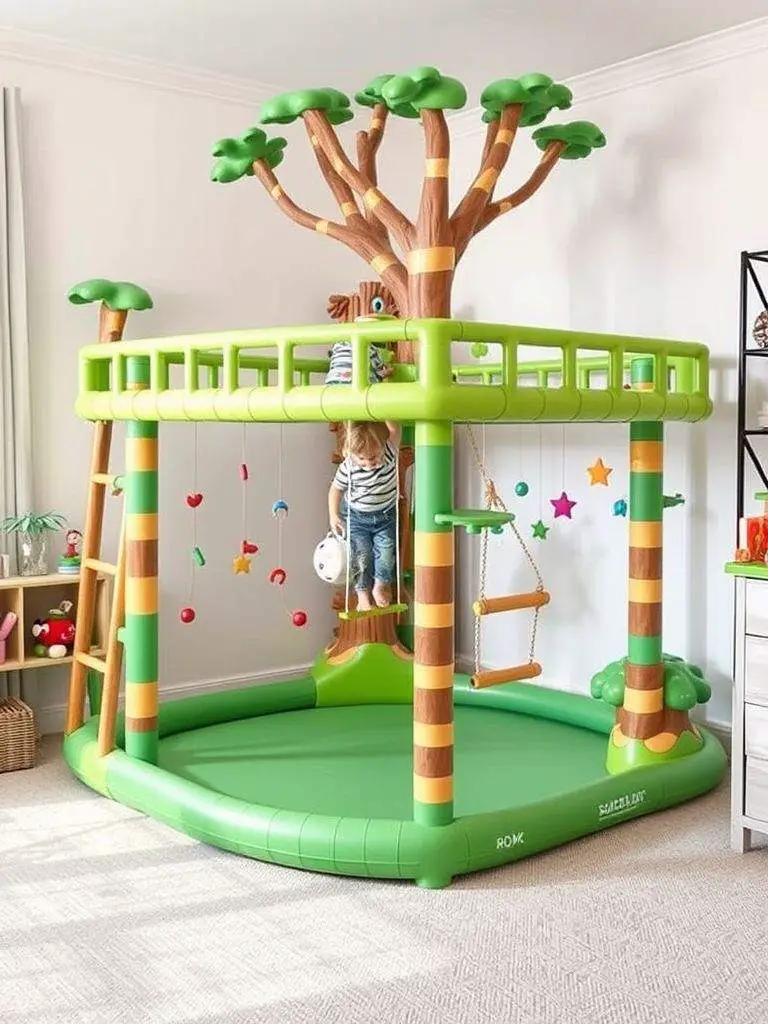
Indoor jungle gyms fit well in living spaces, providing a safe area for kids to climb, swing, and explore. They offer developmental benefits and serve as a great alternative when outdoor play is limited by weather. Indoor jungle gyms help children stay active while having fun at home.
Classic Jungle Gyms
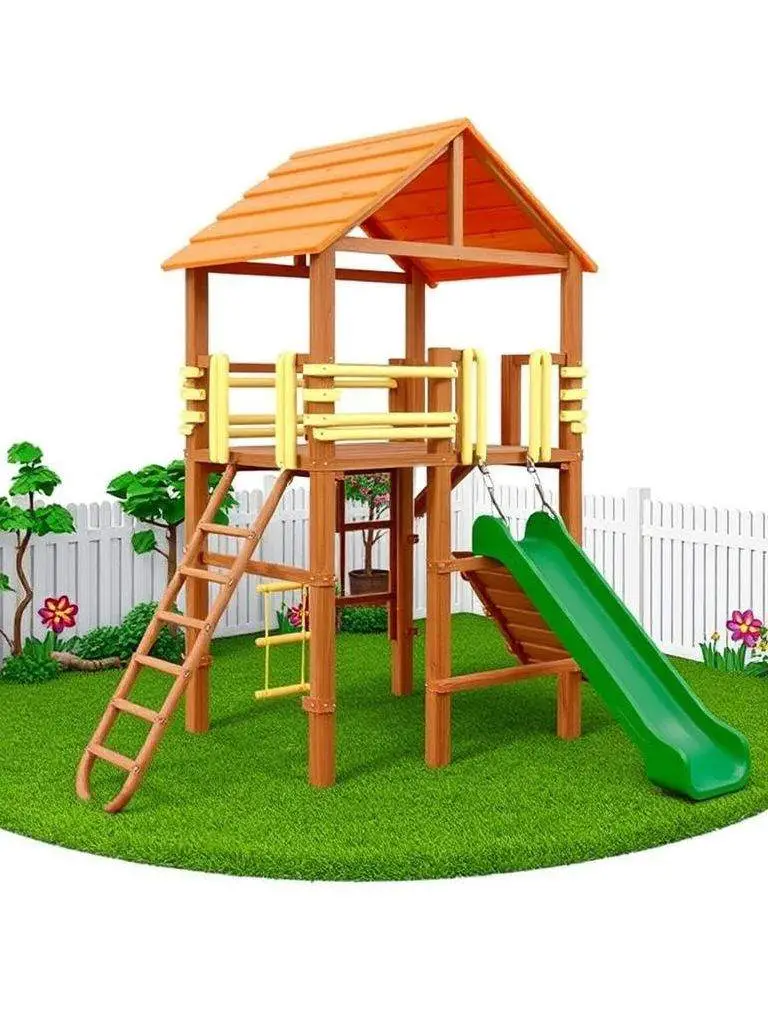
Classic jungle gyms feature traditional structures with ladders, monkey bars, platforms, and slides. These setups provide various activities that challenge children’s physical abilities and build confidence. They come in different heights to accommodate various age groups and skill levels.
Wooden Jungle Gyms
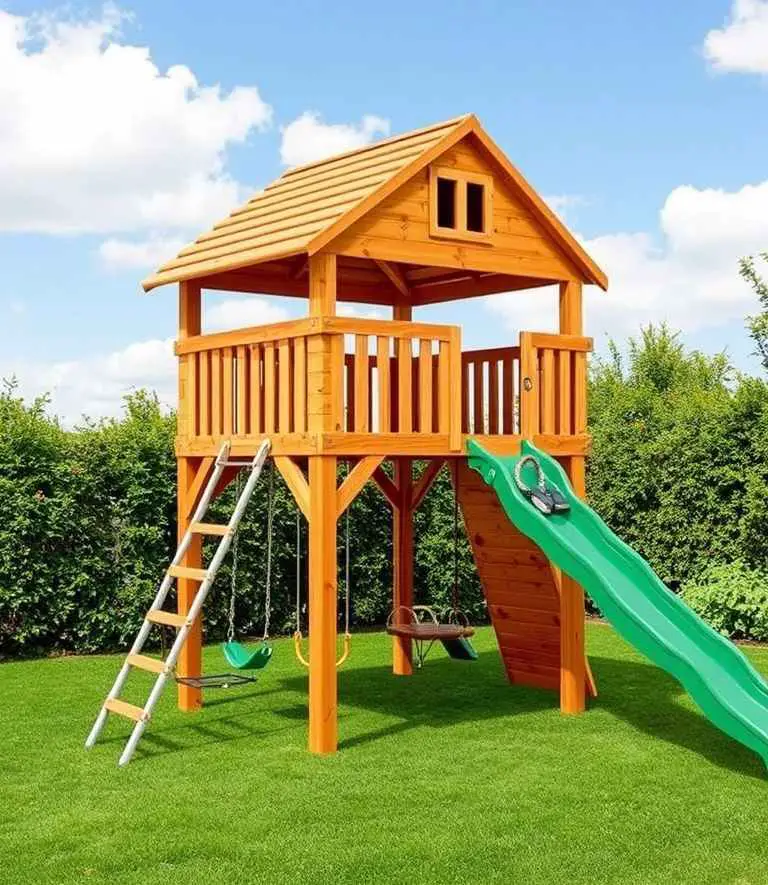
Wooden jungle gyms are popular for their natural look and sturdy construction. Made from durable woods like cedar or redwood, these structures resist rot and pests. Wooden jungle gyms can be customized with swings, slides, and climbing walls, blending seamlessly with outdoor settings.
Metal Jungle Gyms
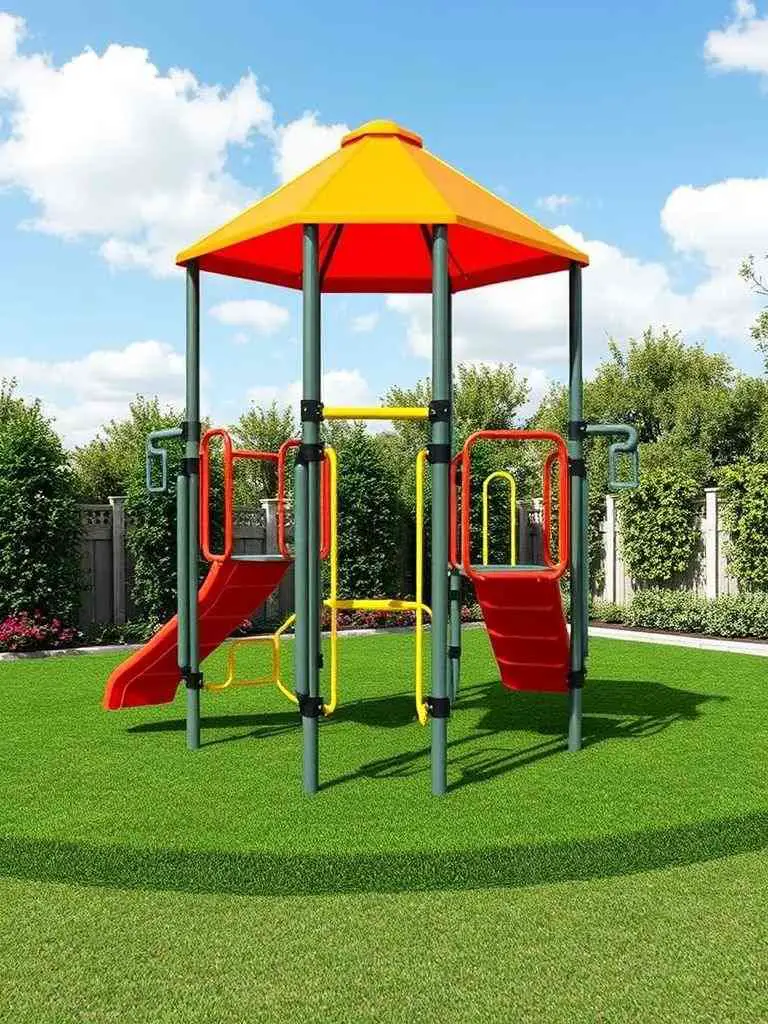
Metal jungle gyms are known for their strength and durability. Typically made from galvanized steel, these structures withstand harsh weather and heavy use. They often feature non-toxic paint to prevent rust, offering a modern appearance suitable for any play area.
Plastic Jungle Gyms
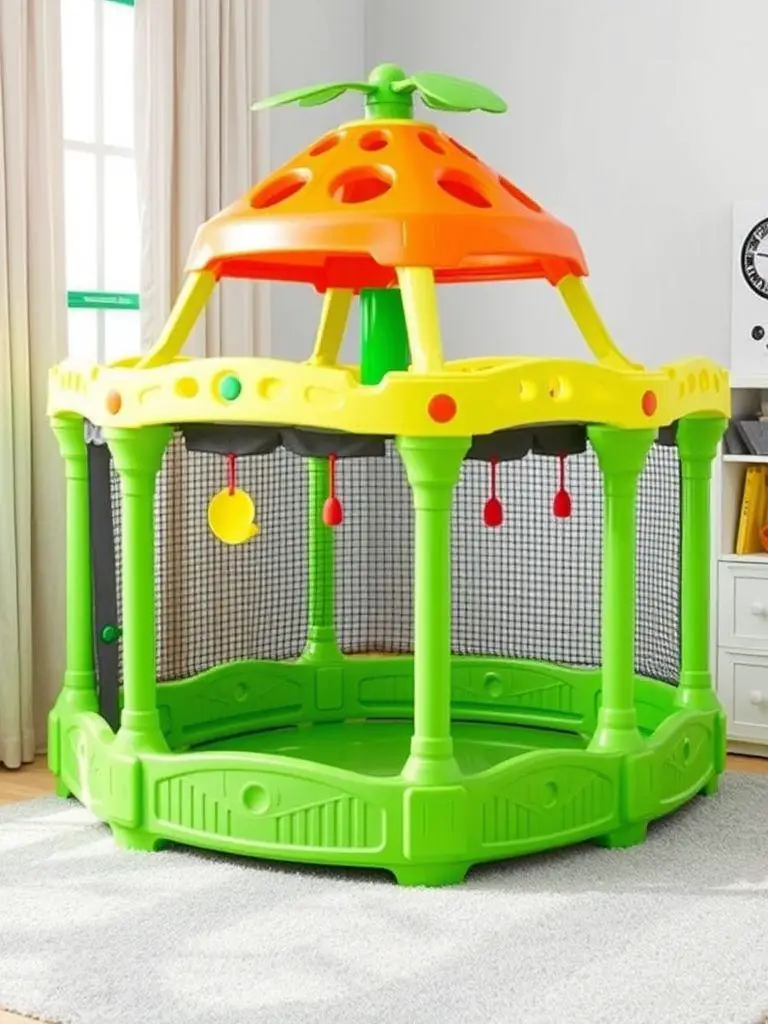
Plastic jungle gyms are lightweight and easy to assemble and available in many colors and designs. They are ideal for younger children, featuring rounded edges and soft surfaces for safety. Plastic structures are also easy to clean and maintain, making them a practical choice for families.
Hybrid Jungle Gyms
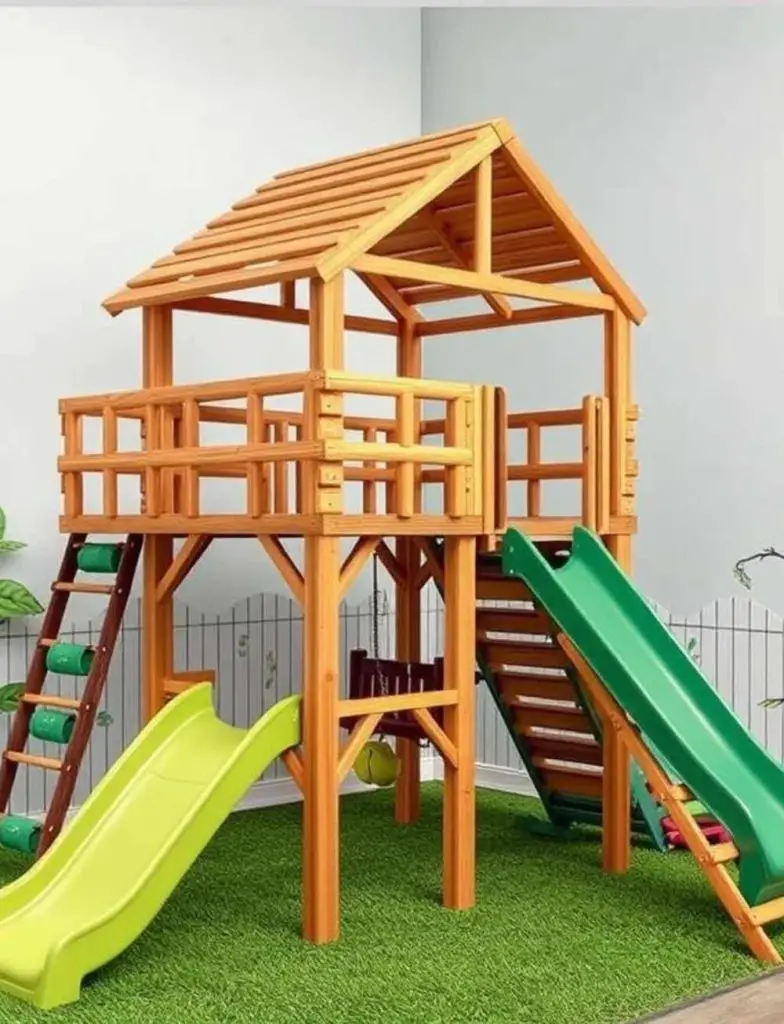
Hybrid jungle gyms combine elements of wood, metal, and plastic to create versatile play experiences. These structures may include wooden platforms, metal bars, and plastic slides, providing the benefits of each material while ensuring durability. This design encourages imaginative and active play.
Design Ideas
Creating a Themed Retreat
Transform a child’s bedroom into a jungle-themed retreat that combines fun and practicality. Use multi-functional furniture like storage beds with hidden compartments for toys, convertible desks for homework and art, and play tables with built-in storage bins. Themed storage options, such as animal-shaped bins and tree-like wall-mounted shelves, enhance the look while promoting organization.
Color Palette Selection
Choose a color scheme that captures the essence of a jungle. Suggested combinations include “Verdant Oasis” with emerald green and bright yellow, “Earthy Tones” with terracotta and muted brown, and “Playful Jungle” with turquoise and vibrant orange. Use these colors in accent walls, bedding, and decor to create an inviting environment that reflects the child’s personality.
Modular and Customizable Playsets
Consider modular jungle gyms for a personalized play experience. These structures can include dome climbers, climbing frames, and monkey bars, allowing for customization based on preferences. Many playsets feature interactive elements like steering wheels and sandboxes that encourage imaginative play and social interaction.
Safety and Durability Considerations
Prioritize safety when designing a jungle gym for kids. Select structures that meet safety standards and use non-toxic materials. Choose designs with rounded edges and weather-resistant features to enhance durability and protect children during play.
Incorporating Interactive Features
Add interactive elements such as slides, swings, and climbing ladders to increase the playset’s appeal. Features like rope ladders, monkey bars, tunnels, and lookout towers promote physical activity and imaginative play. These additions make the jungle gym a tool for creativity and social development.
Personalization Through DIY Projects
Involve children in the decorating process to create an engaging environment. Use thrift store finds and DIY projects to make unique furniture pieces and decorations that reflect the jungle theme while staying budget-friendly. Encouraging kids to participate allows them to express their preferences, making the space feel personal.
DIY Jungle Gym Ideas
Creating a jungle gym in your child’s bedroom can be a fun project that combines creativity and physical activity. Here are some ideas to inspire your DIY jungle gym design.
Planning Your Design
Before building, plan your design. Start by sketching a layout that includes elements like ladders, ropes, and platforms. Measure the room with a tape measure to confirm that your design fits comfortably in the available space. This helps you visualize how each component will work together to create a cohesive play area.
Gathering Materials
Once you have a solid plan, gather materials. Use wood, screws, ropes, and other durable materials for a safe jungle gym. Ensure everything is weatherproof if parts will be exposed to moisture. Pressure-treated lumber is a good choice for its strength and appearance. Don’t forget safety equipment like gloves and safety glasses to protect yourself during construction.
Fun Features to Incorporate
Add fun elements to keep kids entertained. Classic features like slides and ladders are always popular. When choosing a slide, check that its height and slope are safe for children. A sturdy ladder provides a fun way for kids to climb up to their play area. Consider adding swings, climbing walls, or interactive features like a chalkboard wall for drawing or a reading nook with jungle-themed books.
Modular and Customizable Options
For flexibility, consider building a modular jungle gym. These playsets can include components like dome climbers, climbing frames, and monkey bars. Modular designs allow for easy expansion or reconfiguration as your child’s needs change or as they grow older. This adaptability keeps the jungle gym engaging for years.
Safety First
Safety is crucial when constructing a jungle gym. Choose structures with rounded edges to reduce injury risk and use non-toxic materials. Install non-slip mats under climbing areas and use soft landing pads to help prevent injuries from falls. Always check that all components are sturdy and securely attached to maintain a safe play environment.
By incorporating these elements into your DIY jungle gym, you can create an imaginative space that promotes fun and activity at home.
Safety Considerations
Creating a safe environment for children to play in a jungle gym is essential. It requires careful planning and adherence to safety protocols so children can explore and enjoy their space without risk of injury.
Age-Appropriate Zones
When designing a jungle gym, establish age-appropriate zones that meet different developmental needs. For example, toddlers benefit from soft play areas with low platforms, while older children may enjoy more challenging structures. This setup helps minimize accidents by ensuring children use equipment suited to their skill levels.
Adhering to Safety Regulations
Familiarize yourself with local safety guidelines for indoor play areas. Following these regulations promotes children’s well-being and boosts parental confidence in the facility. Include safety features like rounded edges, cushioned padding, and non-toxic materials to create a secure play environment.
Location and Design Considerations
Choose the right location for the jungle gym. Key factors include proximity to the target audience, accessibility, and adequate parking. The layout should provide proper spacing of play equipment to prevent overcrowding, which can lead to collisions and falls. Use impact-absorbing materials for flooring, such as rubber or foam, to reduce injury severity in case of falls.
Regular Inspection and Maintenance
Set up a routine inspection and maintenance schedule to keep the jungle gym safe. Regular checks can identify wear and tear, loose parts, and other potential hazards. Promptly repair any issues to prevent accidents. Clean and sanitize equipment regularly to promote a healthy play environment and reduce the spread of germs.
Staff Training and Emergency Preparedness
Train all staff members in safety protocols, including CPR and first aid, to handle emergencies effectively. Regular training sessions keep staff prepared to manage incidents and maintain hygiene standards. Having an emergency action plan and conducting mock drills can further improve preparedness, making the environment safer for children.
By integrating these safety considerations, a jungle gym can provide a fun and secure space where children can play freely while parents feel confident in the environment’s safety.
Promoting Physical Development
Jungle gyms play an important role in children’s physical development. They provide a platform for activities that enhance gross motor skills, coordination, and overall fitness. Components like ladders, slides, swings, and climbing walls challenge various aspects of children’s physical abilities.
Gross Motor Skills
Activities in jungle gyms help develop gross motor skills. These skills involve large muscle groups and are essential for everyday actions like walking, running, jumping, and climbing. Climbing strengthens the upper body and improves coordination while navigating obstacles promotes balance and spatial awareness. As children play, they refine their ability to perform complex movements vital for sports and recreational activities.
Coordination and Balance
Jungle gyms improve children’s coordination and balance by requiring precise movements during play. Activities such as swinging, climbing, and hanging build grip strength, core muscles, and body awareness. Children learn to control their body position and movements in space, which is crucial for fitness and injury prevention.
Cardiovascular Health and Endurance
Regular play on jungle gyms promotes muscle strength and supports cardiovascular health. The active nature of outdoor play helps children build endurance and engage in exercise, reducing the risk of obesity and related health issues. Encouraging active lifestyles early sets a foundation for lifelong healthy habits.
Risk Management and Resilience
Jungle gyms also teach children to assess and manage risks. Facing various challenges helps them learn resilience and gain confidence in their abilities. This experience fosters a positive attitude toward physical activities and encourages children to take healthy risks—an essential skill for both play and real-life situations.
By engaging with jungle gyms, children enhance their physical development. This lays the groundwork for a healthy lifestyle while equipping them with important skills that benefit them throughout their lives.
